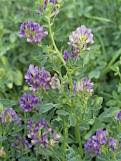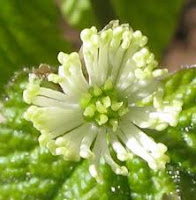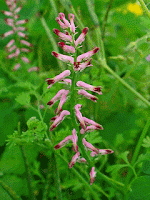The sassafras tree can be a bush-sized plant or a sixty foot tree and is native to North America. It has a long history of use by Native Americans who passed on its uses to the early colonists. It may have been discovered by the Spanish explorers in Florida in the 1560s. They took it back to Spain and used it as a remedy for syphilis and rheumatism among other ailments, but its use has been disputed for centuries.
Its root was official in the British Pharmacopoeia and in the German one, but in 1960 its oil was banned as a food additive by the USFDA because it contains safrol which caused liver cancer in rats in laboratory experiments. Later sassafras root bark and leaves were banned but now commercially produced sassafras tea has the safrol removed, but it is not possible to do this at home. The oil is also thought by some to have abortifacient properties.
 In the past a tonic was made from the root and it was used along with the young shoots, to flavour root beer in the States. The root and berries, which are a lot like those from the cinnamon tree, were used as flavouring in soups and stews, and the winter buds and young leaves were also eaten raw.
In the past a tonic was made from the root and it was used along with the young shoots, to flavour root beer in the States. The root and berries, which are a lot like those from the cinnamon tree, were used as flavouring in soups and stews, and the winter buds and young leaves were also eaten raw. Sassafras trees have been cultivated in Britain at least since the early 17th century valued as an ornamental in some gardens for their autumn foliage. It is a member of the Lauraceae family, making it a relative of the bay tree. Its root bark oil was used to make cheap soap and perfume, while the superior oil from the fruit was used for the more expensive perfumes. A yellow dye is obtained from the bark and wood of the tree.
In the late 19th century sassafras tea, with milk and sugar was sold in the early mornings on the streets of London, and was called ‘saloop,’ which is a far cry from salep made from saffron and still drunk in Turkey in the early morning.
The twigs and branches contain mucilage which used to be used as a poultice for eye problems or as a wash for sore eyes, and was also used for chest, liver and kidney problems.
 Traditionally the oil was used for menstrual problems, to relieve the pains following childbirth and as a remedy for gonorrhoea. Combined with Guaiacum officinale and sarsaparilla it was used as a cure for gout, rheumatism and a number of other ailments, externally to relieve the pain of these inflammatory diseases. The oil is a narcotic and can cause liver failure and death.
Traditionally the oil was used for menstrual problems, to relieve the pains following childbirth and as a remedy for gonorrhoea. Combined with Guaiacum officinale and sarsaparilla it was used as a cure for gout, rheumatism and a number of other ailments, externally to relieve the pain of these inflammatory diseases. The oil is a narcotic and can cause liver failure and death. The tisane or tea is supposed to be good for menstrual problems and as a general tonic, blood purifier and many other properties have been ascribed to it, but there is no clinical evidence to support its traditional uses.





















































